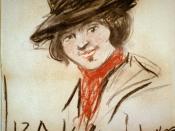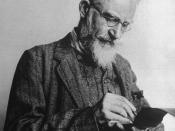"Pygmalion" by George Bernard Shaw
'Pygmalion' is set in the late 1800s, during the Victorian age, when the distinction between the social-economic classes was very clearly made. Shaw made this issue one of the themes of this play and unveiled the "markers" people of the era had used to judge and evaluate one another. These 'yardsticks' include - articulation of the English language, wealth, social status, dressing and education.
The members of society at that time were plainly marked by how they articulate the English language. Those higher up the socio-economic ladder spoke better English, 'genteel English' as Eliza Doolittle puts it, and those from the lower classes spoke a hotchpotch of English dialects according to their origins. Henry Higgins, a professor of linguistics readily informs us, "... by creating a new speech for her. It's filling up the deepest gulf that separates class from class..."(Act
III)
Wealth also plays an important role as a class 'marker'; those from the higher end of the socio-economic spectrum tend to be more affluent compared to the masses of the lower end. This is especially evident in Pygmalion's first act, when Higgins casually flings his loose change into Eliza's flower-basket; 'loose change' that Eliza deems as a small fortune.
Status is also important for it conjures an illusion of affluence. This is shown in the Eynsford-Hills' case where Clara so desperately clings to the middle-class society despite the fact that they were probably poorer that many people from the lower classes. However, they were able to keep up in the upper classes largely due to their name and background.
On a more superficial level, it is also possible to differentiate the classes through the way they dressed. For instance, Eliza, at the beginning of the play, was...


